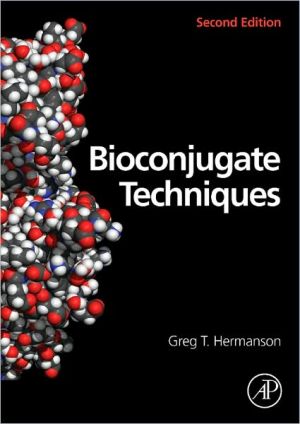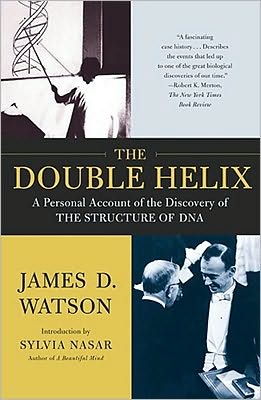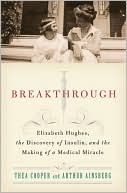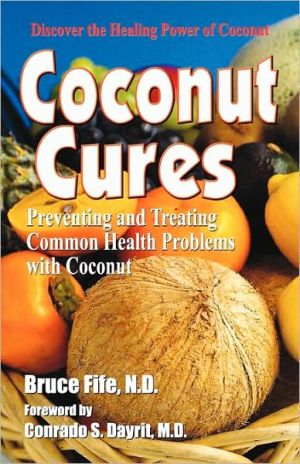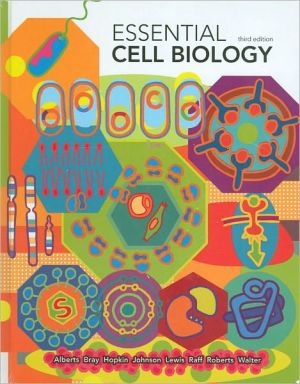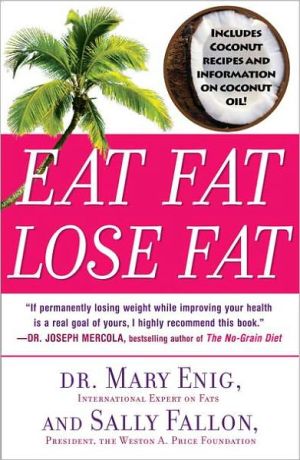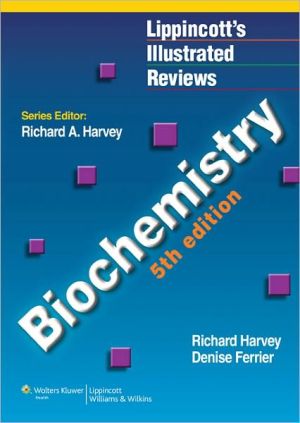Bioconjugate Techniques
Essential guide to the modification and crosslinking of biomolecules for use in research, diagnostics, and therapeutics.\ \ Audience: Researchers in biochemistry, molecular biology, immunology, pharmacology, cell biology, and microbiology will be interested.\
Search in google:
Bioconjugate Techniques is the essential guide to the modification and cross-linking of biomolecules for use in research, diagnostics, and therapeutics.It provides detailed information on the chemistry, reagent systems, and practical applications for creating labeled or conjugated molecules. It also describes dozens of reactions with details on hundreds of commercially available reagents and the use of these reagents for modifying or cross-linking peptides and proteins, sugars and polysaccharides, nucleic acids and oligonucleotides, lipids, and synthetic polymers. Armed with this information and the abundant protocols provided, readers can form unique complexes that can be used for detecting, quantifying, and targeting important analytes.This book helps readers make: high-activity antibody-enzyme conjugates, immunotoxins, immunogen complexes, liposome conjugates, as well as biotinylated molecules, avidin or streptavidin conjugates, colloidal gold-labeled proteins, PEG or dextran complexes, labeled oligonucleotide probes, and fluorescently tagged or radiolabeled molecules.Key Features* The first book to capture the entire field of bioconjugate chemistry in a single volume* A practical guide to modification and cross-linking technology for research, diagnostics, and therapeutics* Provides useful, detailed, easy-to-follow, step-by-step protocols* Contains easy-to-read and easy-to-understand key concepts for making bioconjugates of all types* Organized to efficiently cover the chemistry of bioconjugation, the major reagents available for modification and cross-linking, and the application of these reagents to the synthesis of highly active conjugates* Cites more than 1200 references keyed to concepts covered in the book* Uses more than 600 figures to illustrate bioconjugate reagents, their reactions, and applications* Suggests sources for all key reagents Walter D. Niles Bioconjugation is the covalent linking together of biomolecules to produce a hybrid molecule with properties of both its precursors. This book is a compendium of methodologies, recipes, and applications of bioconjugation that have produced useful molecules. This is a useful book with lots of practical knowledge, a good index, and an adequate list of references to the primary literature. Bioconjugated molecules have found places in nearly all fields of the modern life science, ranging from new reagents for understanding basic mechanisms, to diagnostic tools and exciting new therapeutics at the very edge of biotechnological research and development. The author has succeeded in the formidable task of collecting and presenting, in accessible and practical ways, the common chemical foundations for a diverse assortment of bioconjugations. This book will find a place in the library or on the reading stand of all people interested in this area including bench scientists (students or seasoned veterans) in academic and industrial research, patent lawyers, perhaps, or anyone seeking to get a handle on this burgeoning field. Even the senior professional who has contributed to the primary literature may appreciate having a fairly large amount of information in one place. The author himself is in the thick of bioconjugation products at Pierce Chemical Company in Rockford, IL, with a track record in haptogen creation and in biotinylation, and he has provided a great service by relating the do's, don'ts, and possible blind alleys and sidetracks gained from both personal experience as well as collective wisdom. The book is not particularly biased toward Pierce's products; the BODIPY line of newfluorescent dyes produced by at least one competitor, Molecular Probes, Inc. of Beaverton, OR, is covered. Beginning with an overview of the structures of proteins, nucleic acids, lipids, and carbohydrates and their reactive functional groups, the first part of the book emphasizes reaction mechanisms. The second section covers a broad assortment of available reactive compounds. These reagents are considered both from the perspective of the functional groups they modify and then from the types of reaction products they generate, in an especially comprehensive section. Containing not only detailed protocols useful for particular conjugation reactions, it also considers possible pitfalls and side reactions and offers cautionary procedures for improving chances of desired results. The final part of the book covers some very specific applications such as the generation of immunogenic haptens, hybrid antibody molecule formation with a detailed treatment of immunotoxins, attachment of a variety of functional moieties to lipids to make special liposomes for drug delivery, and the labeling of nucleic wills with fluorescent and active probes. The only potential problems with this book might be currency (nearly all available fluorescent probes are covered, with one notable exception -- the cyanine dyes that are rapidly growing their utility in generating fluorescent antibodies), the odd reference that is not especially helpful, or an omitted reference that demystifies a field (such as liposome formation). These are trivial quibbles, of course, with a generally magnificent work that covers such a broad area and packs in a great many useful details. I am glad that someone finally wrote this book. Bravo!
Pt. I Bioconjugate Chemistry1 Functional Targets 32 The Chemistry of Reactive Groups 169Pt. II Bioconjugate Reagents3 Zero-Length Crosslinkers 2154 Homobifunctional Crosslinkers 2345 Heterobifunctional Crosslinkers 2766 Trifunctional Crosslinkers 3367 Dendrimers and Dendrons 3468 Cleavable Reagent Systems 3919 Fluorescent Probes 39610 Brfunctional Chelating Agents and Radioimmunoconjugates 49811 Biotinylation Reagents 50612 Iodination Reagents 54613 Silane Coupling Agents 56214 Microparticles and Nanoparticles 58215 Buckyballs, Fullerenes, and Carbon Nanotubes 62716 Mass Tags and Isotope Tags 64917 Chemoselective Ligation: Bioorthogonal Reagents 66618 Discrete PEG Reagents 707Pt. III Bioconjugate Applications19 Preparation of Hapten-Carrier lmmunogen Conjugates 74520 Antibody Modification and Conjugation 78321 Immunotoxin Conjugation Techniques 82422 Preparation of Liposome Conjugates and Derivatives 85823 Avidin-Biotin Systems 90024 Preparation of Colloidal Gold-Labeled Proteins 92425 Modification with Synthetic Polymers 93626 Enzyme Modification and Conjugation 96127 Nucleic Acid and Oligonucleotide Modification and Conjugation 96928 Bioconjugation in the Study of Protein Interactions 1003
\ Walter D. NilesBioconjugation is the covalent linking together of biomolecules to produce a hybrid molecule with properties of both its precursors. This book is a compendium of methodologies, recipes, and applications of bioconjugation that have produced useful molecules. This is a useful book with lots of practical knowledge, a good index, and an adequate list of references to the primary literature. Bioconjugated molecules have found places in nearly all fields of the modern life science, ranging from new reagents for understanding basic mechanisms, to diagnostic tools and exciting new therapeutics at the very edge of biotechnological research and development. The author has succeeded in the formidable task of collecting and presenting, in accessible and practical ways, the common chemical foundations for a diverse assortment of bioconjugations. This book will find a place in the library or on the reading stand of all people interested in this area including bench scientists (students or seasoned veterans) in academic and industrial research, patent lawyers, perhaps, or anyone seeking to get a handle on this burgeoning field. Even the senior professional who has contributed to the primary literature may appreciate having a fairly large amount of information in one place. The author himself is in the thick of bioconjugation products at Pierce Chemical Company in Rockford, IL, with a track record in haptogen creation and in biotinylation, and he has provided a great service by relating the do's, don'ts, and possible blind alleys and sidetracks gained from both personal experience as well as collective wisdom. The book is not particularly biased toward Pierce's products; the BODIPY line of newfluorescent dyes produced by at least one competitor, Molecular Probes, Inc. of Beaverton, OR, is covered. Beginning with an overview of the structures of proteins, nucleic acids, lipids, and carbohydrates and their reactive functional groups, the first part of the book emphasizes reaction mechanisms. The second section covers a broad assortment of available reactive compounds. These reagents are considered both from the perspective of the functional groups they modify and then from the types of reaction products they generate, in an especially comprehensive section. Containing not only detailed protocols useful for particular conjugation reactions, it also considers possible pitfalls and side reactions and offers cautionary procedures for improving chances of desired results. The final part of the book covers some very specific applications such as the generation of immunogenic haptens, hybrid antibody molecule formation with a detailed treatment of immunotoxins, attachment of a variety of functional moieties to lipids to make special liposomes for drug delivery, and the labeling of nucleic wills with fluorescent and active probes. The only potential problems with this book might be currency (nearly all available fluorescent probes are covered, with one notable exception -- the cyanine dyes that are rapidly growing their utility in generating fluorescent antibodies), the odd reference that is not especially helpful, or an omitted reference that demystifies a field (such as liposome formation). These are trivial quibbles, of course, with a generally magnificent work that covers such a broad area and packs in a great many useful details. I am glad that someone finally wrote this book. Bravo!\ \ \ \ \ Reviewer: Walter D. Niles, PhD(University of Illinois at Chicago College of Medicine)\ Description: Bioconjugation is the covalent linking together of biomolecules to produce a hybrid molecule with properties of both its precursors. This book is a compendium of methodologies, recipes, and applications of bioconjugation that have produced useful molecules.\ Purpose: This is a useful book with lots of practical knowledge, a good index, and an adequate list of references to the primary literature.\ Audience: Bioconjugated molecules have found places in nearly all fields of the modern life science, ranging from new reagents for understanding basic mechanisms, to diagnostic tools and exciting new therapeutics at the very edge of biotechnological research and development. The author has succeeded in the formidable task of collecting and presenting, in accessible and practical ways, the common chemical foundations for a diverse assortment of bioconjugations. This book will find a place in the library or on the reading stand of all people interested in this area including bench scientists (students or seasoned veterans) in academic and industrial research, patent lawyers, perhaps, or anyone seeking to get a handle on this burgeoning field. Even the senior professional who has contributed to the primary literature may appreciate having a fairly large amount of information in one place. The author himself is in the thick of bioconjugation products at Pierce Chemical Company in Rockford, IL, with a track record in haptogen creation and in biotinylation, and he has provided a great service by relating the do's, don'ts, and possible blind alleys and sidetracks gained from both personal experience as well as collective wisdom. The book is not particularly biased toward Pierce's products; the BODIPY line of new fluorescent dyes produced by at least one competitor, Molecular Probes, Inc. of Beaverton, OR, is covered.\ Features: Beginning with an overview of the structures of proteins, nucleic acids, lipids, and carbohydrates and their reactive functional groups, the first part of the book emphasizes reaction mechanisms. The second section covers a broad assortment of available reactive compounds. These reagents are considered both from the perspective of the functional groups they modify and then from the types of reaction products they generate, in an especially comprehensive section. Containing not only detailed protocols useful for particular conjugation reactions, it also considers possible pitfalls and side reactions and offers cautionary procedures for improving chances of desired results. The final part of the book covers some very specific applications such as the generation of immunogenic haptens, hybrid antibody molecule formation with a detailed treatment of immunotoxins, attachment of a variety of functional moieties to lipids to make special liposomes for drug delivery, and the labeling of nucleic wills with fluorescent and active probes.\ Assessment: The only potential problems with this book might be currency (nearly all available fluorescent probes are covered, with one notable exception — the cyanine dyes that are rapidly growing their utility in generating fluorescent antibodies), the odd reference that is not especially helpful, or an omitted reference that demystifies a field (such as liposome formation). These are trivial quibbles, of course, with a generally magnificent work that covers such a broad area and packs in a great many useful details. I am glad that someone finally wrote this book. Bravo!\ \ \ From the Publisher"This is a well-organized and well-written book; it is readable and comprehensible to the novice, but its content and stylistic approach seem sufficiently sophisticated to appeal to active, knowledgeable workers in the field. It is an impressive compilation of useful theoretical and practical information that is not readily available elsewhere in a single volume."\ --Joseph G. Cannon in JOURNAL OF MEDICINAL CHEMISTRY\ "The presentation throughout is that of a laboratory manual. Well-illustrated descriptions of a particular chemical reaction are followed by a detailed protocol and list of references extending into 1994. The coverage of reagents and methods is comprehensive, and sources are given for commercially available compounds."\ --NATURE\ \ \ \ \ 4 Stars! from Doody\ \
